This post was originally published on this site
Abigail Arellano keeps her son Samuel’s medical bills in a blue folder in a cabinet above the microwave. Even now, four months after the 11-year-old was shot at the Kansas City Chiefs Super Bowl parade, the bills keep coming.
There’s one for $1,040 for the ambulance ride to the hospital that February afternoon. Another for $2,841.17 from an emergency room visit they made three days after the shooting because his bullet wound looked infected. More follow-ups and counseling in March added another $1,500.
“I think I’m missing some,” Arellano said as she leafed through the pages.
The Arellanos are uninsured and counting on assistance from the fund that raised nearly $2 million in the aftermath of the shooting that left one dead and at least 24 other people with bullet wounds. She keeps that application in the blue folder as well.
The medical costs incurred by the survivors of the shooting are hitting hard, and they won’t end soon. The average medical spending for someone who is shot increases by nearly $30,000 in the first year, according to a Harvard Medical School study. Another study found that number goes up to $35,000 for children. Ten kids were shot at the parade.
Then there are life’s ordinary bills — rent, utilities, car repairs — that don’t stop just because someone survived a mass shooting, even if their injuries prevent them from working or sending kids to school.
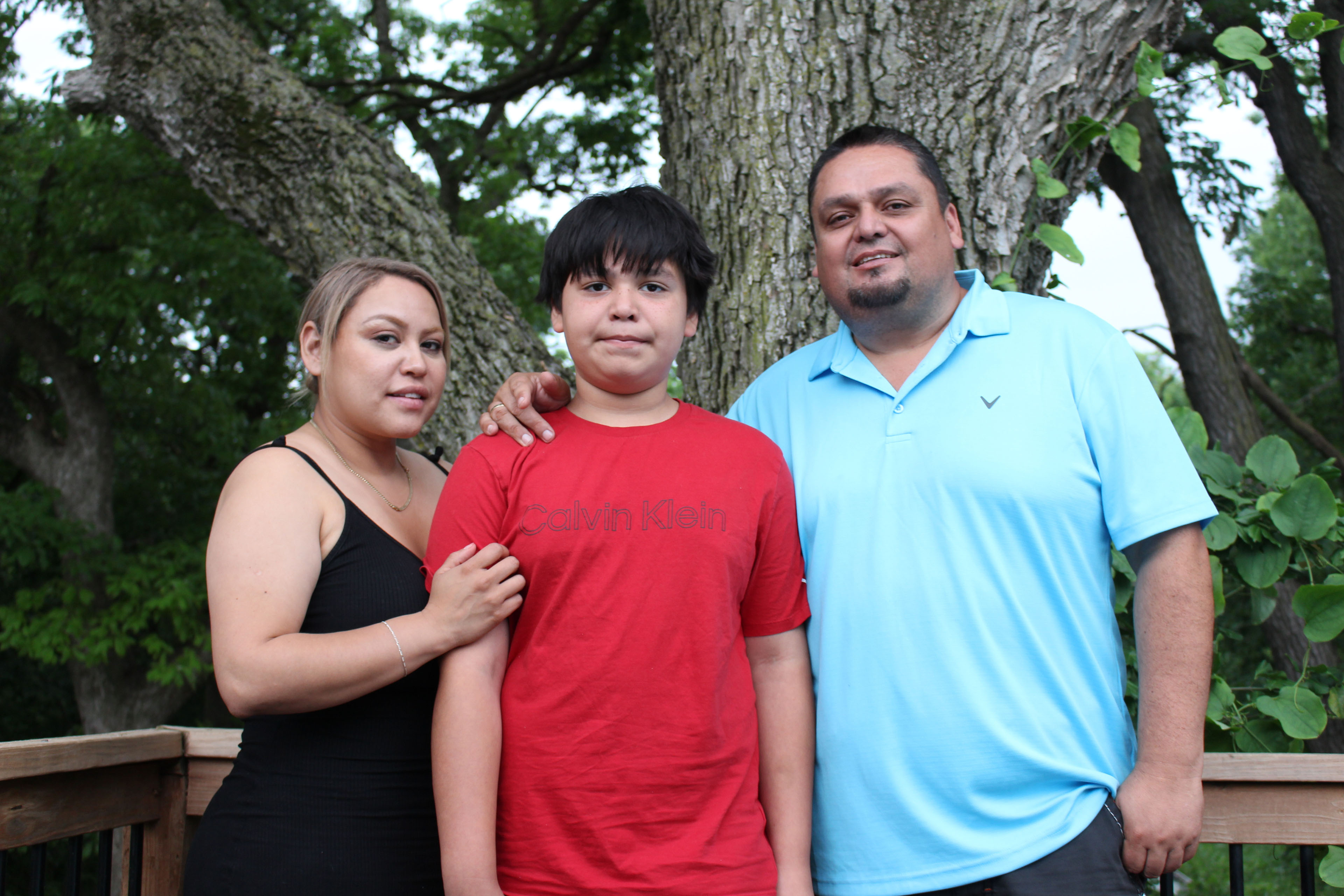
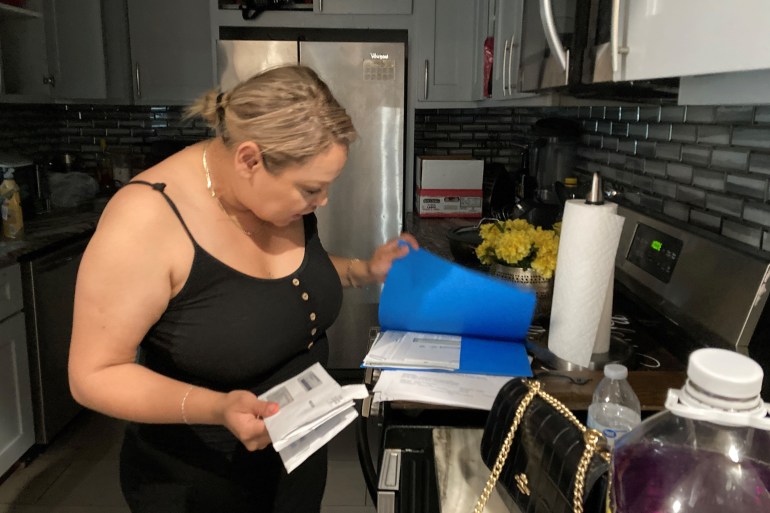
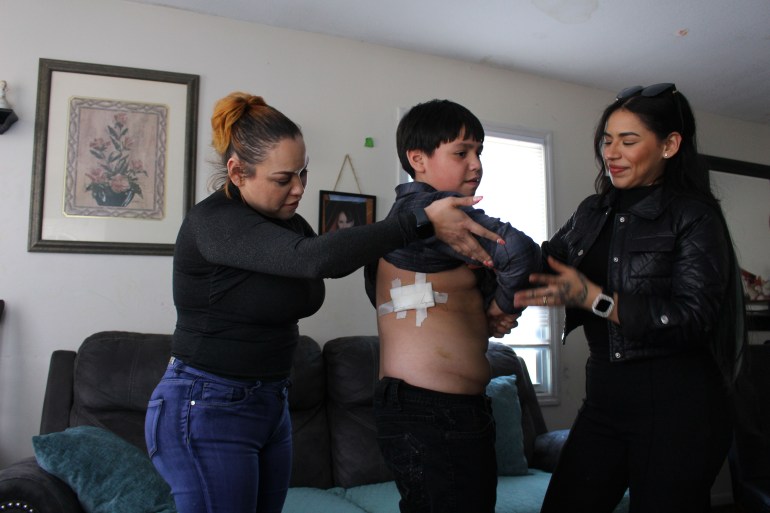
The financial burden that comes with surviving is so common it has a name, according to Aswad Thomas of the nonprofit Alliance for Safety and Justice: victimization debt. Some pay it out-of-pocket. Some open a new credit card. Some find help from generous strangers. Others can’t make ends meet.
“We’re really broke right now,” said Jacob Gooch Sr., another survivor, who was shot through the foot and has not yet been able to return to work.
“We’re, like, exhausting our third credit card.”
As is common after mass shootings, a mosaic of new and established resources emerged in this Missouri city promising help. Those include the #KCStrong fund established by the United Way of Greater Kansas City, which is expected to begin paying victims at the end of June.
Survivors must navigate each opportunity to request help as best they can — and hope money comes through.
GoFundMes, Generous Strangers, and a New Line of Credit
Mostly, it’s the moms who keep the bills organized. Tucked above the microwave. Zipped inside a purse. Screenshots stored on a phone. And then there’s a maze of paperwork: The Missouri state victims’ compensation form is five pages, including instructions. It’s another six pages for help from the United Way.
Emily Tavis keeps stacks of paperwork with color-coded binder clips in her basement: Black for her partner, Gooch Sr.; blue for her stepson, Jacob Gooch Jr.; pink for herself. All three were shot at the parade.
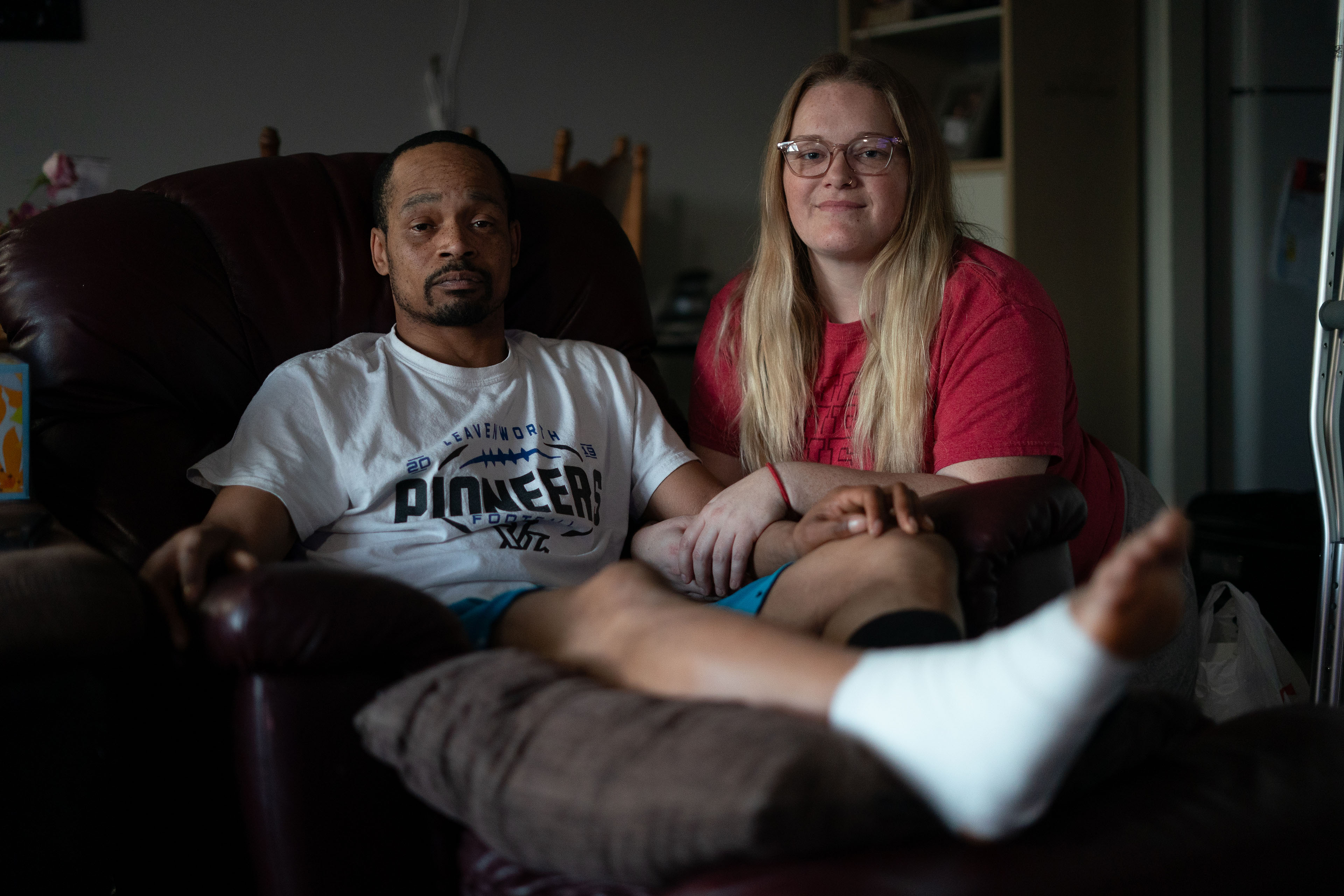
Tavis was able to walk after a bullet ripped through her leg, and she considered declining the ambulance ride because she was worried about the cost — she lacked insurance at the time.
Gooch Sr. was unable to walk because he’d been shot in the foot. So they shared an ambulance to the hospital with two of their kids.
Tavis and Gooch Sr. received separate $1,145 bills for the ambulance. Gooch Jr. did not, possibly because he has health coverage through Medicaid, Tavis said.
She sends the medical bills to victims’ compensation, a program to help with the economic losses from a crime, such as medical expenses and lost wages. Even though Tavis and Gooch live in Leavenworth, Kansas, their compensation comes from the program in Missouri, where the shooting occurred.
The program pays only for economic losses not covered by other sources like health insurance, donations, and crowdsourced fundraisers. Gooch Sr. and Jr. both had health insurance at the time of the parade, so the family has been sending only the uncovered portion to victims’ compensation.
The family initially received a lot of support. Friends and relatives made sure they had food to eat. The founder of an online group of Kansas City Chiefs fans sent $1,000 and gifts for the family. A GoFundMe page raised $9,500. And their tax refund helped.
They knew money might get tight with Gooch Sr. unable to work, so they paid three months’ rent in advance. They also paid to have his Ford Escape fixed so he could eventually return to work and bought Tavis a used Honda Accord so she could drive to the job she started 12 days after the parade.
And because the donations were intended for the whole family, they decided to buy summer passes to the Worlds of Fun amusement park for the kids.
But recently, they’ve felt stretched. Gooch Sr.’s short-term disability payments abruptly stopped in May when his health insurance prompted him to see an in-network doctor. He said the short-term disability plan initially didn’t approve the paperwork from his new doctor and started an investigation. The issue was resolved in June and he was expecting back pay soon. In the interim, though, the couple opened a new credit card to cover their bills.
In the interim, the couple opened a new credit card to cover their bills.
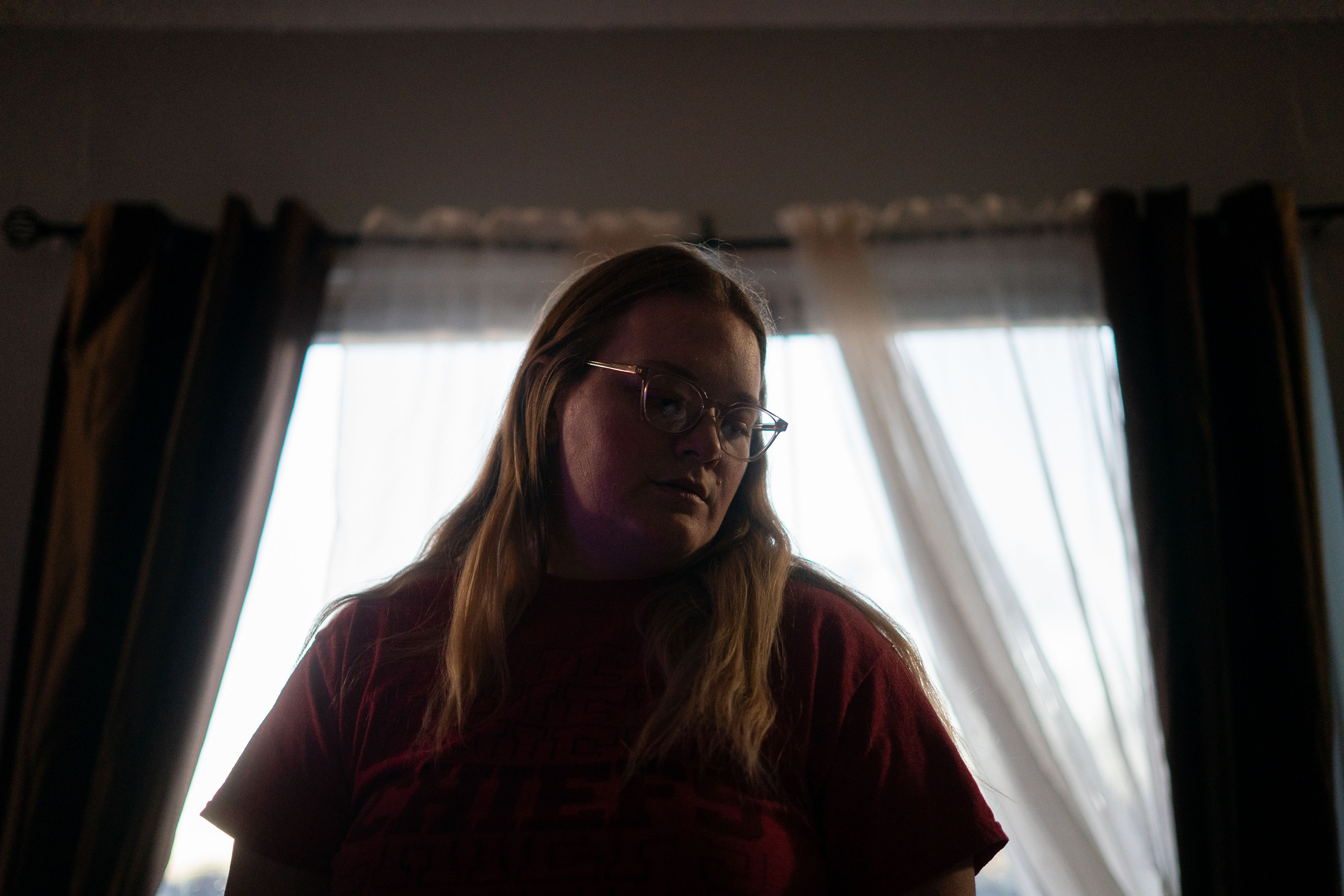

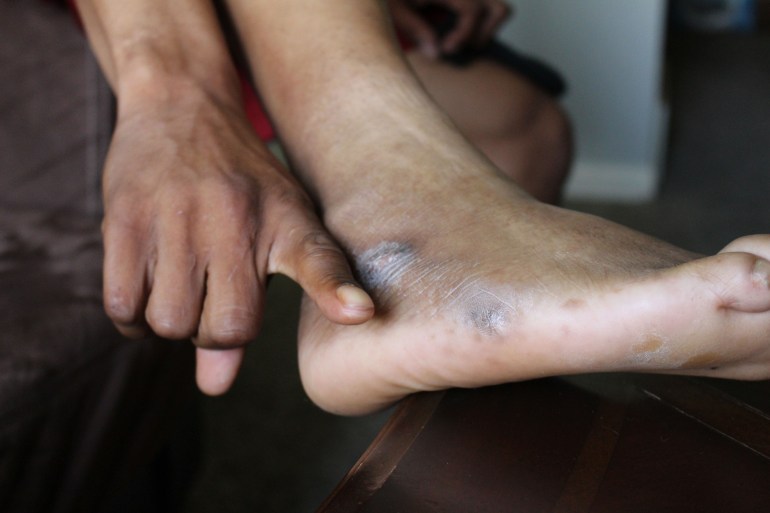
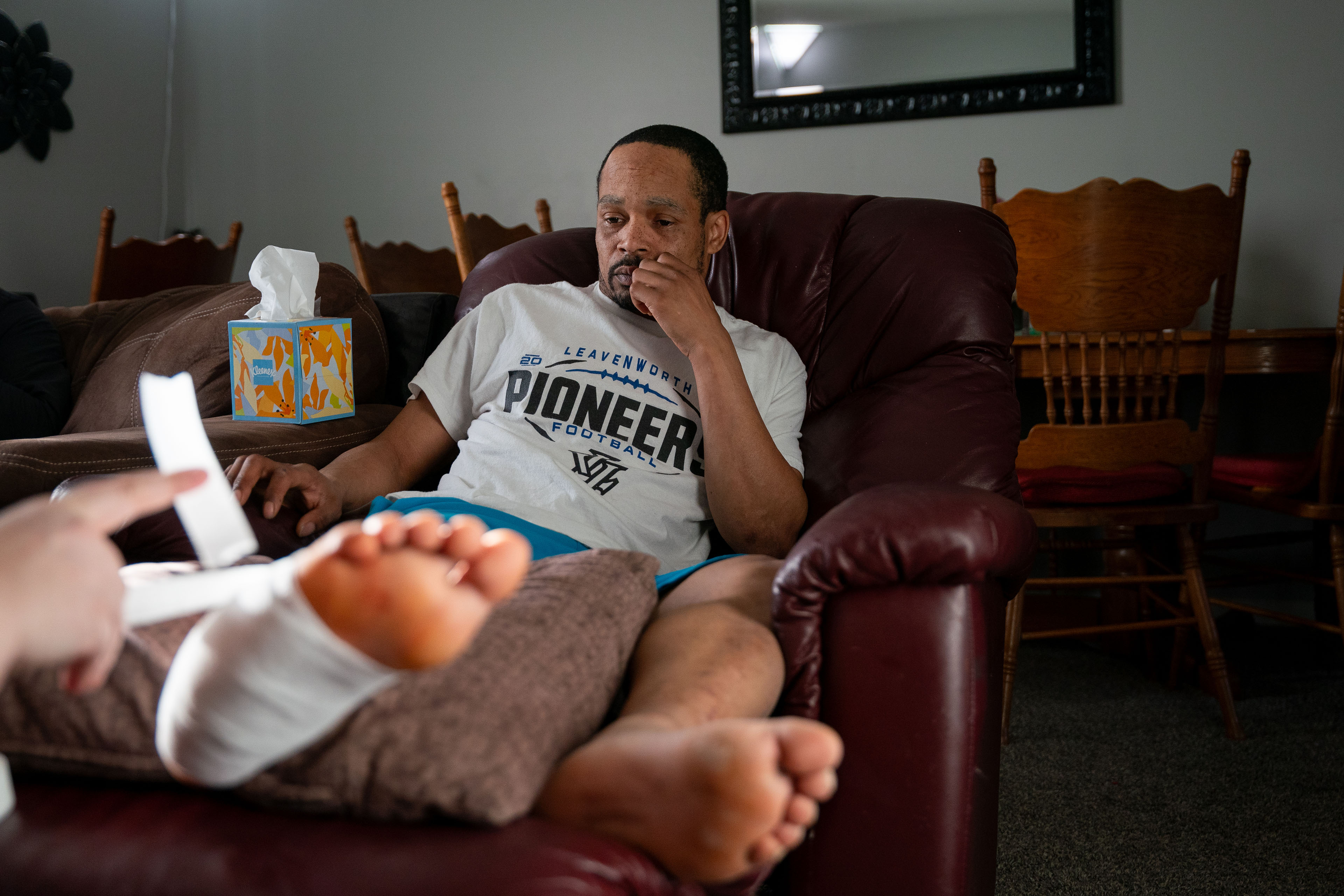
“We’ve definitely been robbing Peter to pay Paul,” Tavis said.
Ideally, the money that eventually comes from the United Way, victims’ compensation, and, they hope, back pay from short-term disability will be enough to pay off their debts.
But, Tavis said, “You gotta do what you gotta do. We’re not going to go without lights.”
United Way Payout Expected at End of June
With every mass shooting, donations for survivors inevitably flow in, “just like peanut butter goes with jelly, because people want to help,” said Jeff Dion, executive director of the Mass Violence Survivors Fund, a nonprofit that has helped many communities manage such funds.
Typically, he said, it takes about five months to disburse the money from these large community funds. Victims can potentially get money sooner if their community has a plan in place for these types of funds before a mass shooting. Funds may also advance money to people with urgent financial needs who are certain to qualify.
The United Way hung banners in the Chiefs colors on Kansas City’s Union Station with its #KCStrong campaign within days of the shootings. Driven by large donations from the team, the NFL, quarterback Patrick Mahomes, other individuals, and local companies, it ultimately raised more than $1.8 million.
The promise of a large payout has kept the injured hopeful, even as many felt confused by the process. Some people interviewed for this story did not wish to say anything negative, fearing it would hurt their allocation.
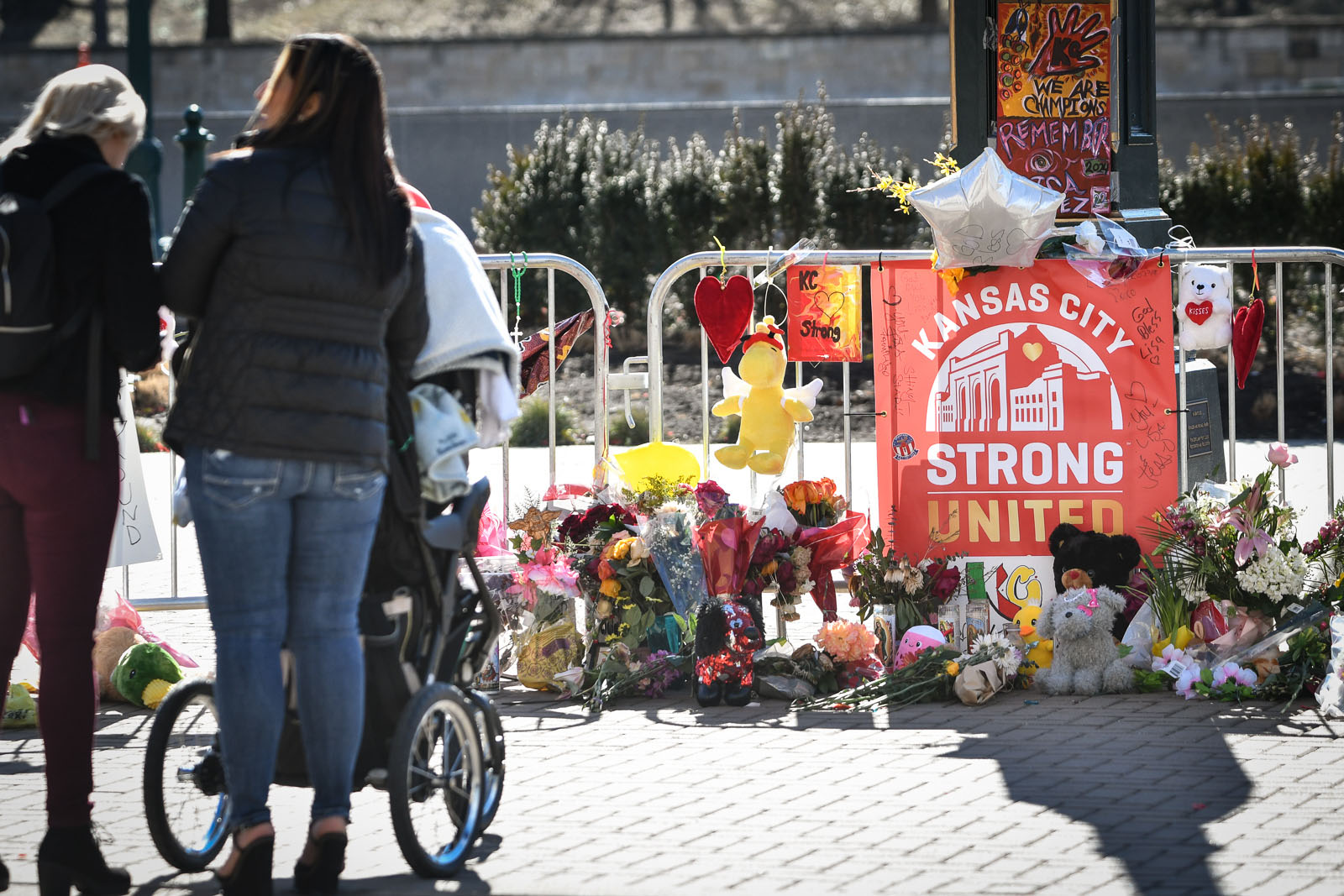
United Way officials announced in April that donations would be closed at the end of that month. On May 1, the organization posted a notice saying it would issue “claimant forms” and that the Jackson County Prosecutor’s Office was helping verify shooting victims. The United Way affiliate’s board of trustees plans to meet June 26 to determine allocations, with payments arriving as early as June 27.
Kera Mashek, a spokesperson for United Way of Greater Kansas City, said payouts will be made to 20 of the 24 shooting survivors. The other four either couldn’t be verified as victims or turned down the funds, she said. Claimants do not include the 67 people prosecutors say were trampled in the melee, she said.
Pending board approval, money will also be disbursed to 14 community groups that support nonviolence initiatives, mental health concerns, and first responders, Mashek said.
To criticism that the United Way didn’t communicate well with the victims, Mashek said it tried to respond in a timely manner.
“We’ve tried to keep that line of communication open as fast as possible and most people have been very patient,” she said. “I think that they will be very grateful and very, I believe, pleasantly surprised with the amount of funding that they receive.”
Other Resources Available
Abigail Arellano hadn’t heard of victims’ compensation, which is common. A 2022 survey from the Alliance for Safety and Justice found that 96% of victims did not receive that support and many didn’t know it existed.
Arellano and her husband, Antonio, didn’t attend the parade but they’ve had medical expenses as well. Antonio has been going to therapy at a local health center to help with the stressful task of guiding his son through the trauma. It’s been helpful. But he’s been paying around $125 out-of-pocket for each session, he said, and the bills are mounting.
One of Samuel’s sisters set up a GoFundMe that raised $12,500, and Abigail said it helped that the family shared their story publicly and that Abigail reached out to help others in the Latino community affected by the shooting.
It was Abigail, for instance, who connected 71-year-old Sarai Holguin with the Mexican Consulate in Kansas City. The consulate, in turn, helped Holguin register as an official victim of the shooting, which will enable her to receive assistance from the United Way. Holguin’s bills now include a fourth surgery, to remove the bullet lodged near her knee that she had previously made peace with living with forever — until it began protruding through her skin.
‘Generous and Quick’ Relief to Victims
Several survivors were relieved and grateful to receive funds from a less high-profile, nondenominational group called “The Church Loves Kansas City.”
The day after the shooting, Gary Kendall, who ran a Christian nonprofit called “Love KC,” started a text chain at 6 a.m. with city leaders and faith-based groups, and eventually received pledges of $184,500. (Love KC has now merged with another nonprofit, “Unite KC,” which is disbursing its funds.)
The first payout went to the family of Lisa Lopez-Galvan, the 43-year-old mother of two and popular DJ who was the sole fatality during the parade shootings. Unite KC spent $15,000 on her burial expenses.
Unite KC spent $2,800 so James and Brandie Lemons could get their health insurance restored because James couldn’t work. Unite KC also paid $2,200 for the out-of-pocket surgical costs when James decided to get the bullet removed from his leg.
“I appreciate it,” an emotional James Lemons said. “They don’t have to do that, to open their hearts for no reason.”
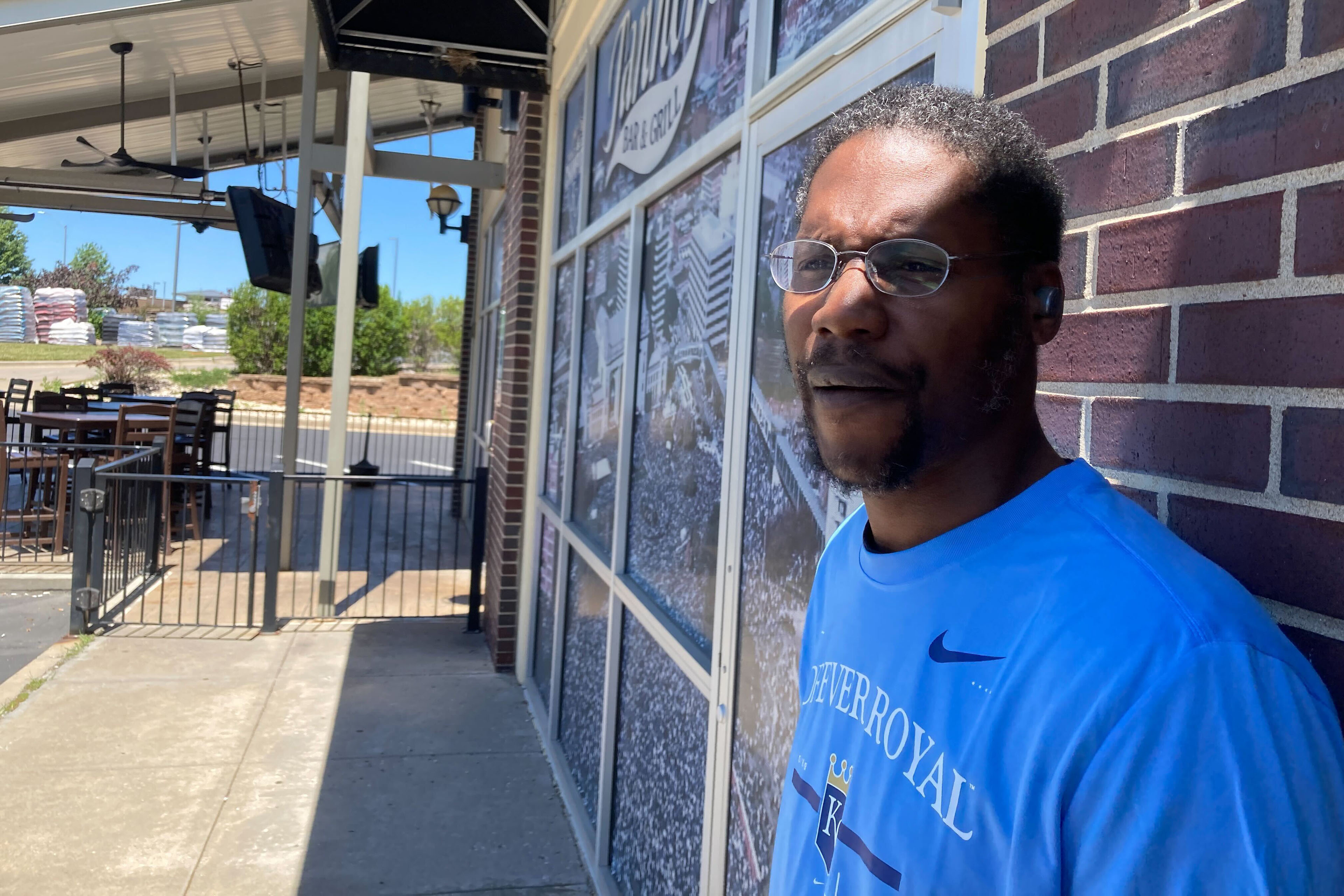
Erika Nelson was struggling to pay for household expenses and had to take time off from her home health care job to take her injured daughter, 15-year-old Mireya, to doctor appointments. Mireya was shot in the chin and shoulder and is recovering.
A GoFundMe page set up by Nelson’s best friend raised about $11,000, but it was frozen after Nelson tried to get into the account and GoFundMe thought it was being hacked. She feared the lights would be shut off in their apartment, because of unpaid electric bills, and was feeling desperate.
“I’m struggling with, like, you know, groceries,” Nelson said. “People were like, ‘Oh, go to food pantries.’ Well, the food pantries are not open the times I can get off. I can’t just take off work to go to a food pantry.”
After meeting with Gary Kendall, Nelson received three months of rent and utility payments, about $3,500.
“A weight off my shoulder. I mean, yeah. In a big way,” she whispered. “’Cause you never know. You never know what can happen in two days, five days, two weeks, two months.”
Samuel Arellano’s family recently connected with Unite KC, which will pay for his ambulance bill, one of the hospital bills, and some therapy, worth about $6,000. The bill for the initial emergency room trip was about $20,000, his parents said, but the hospital had been reluctant to send it and ultimately covered the cost.
And Unite KC also intends to pay off a $1,300 credit card bill for Emily Tavis and Jacob Gooch Sr.
Unite KC has disbursed $40,000 so far and hopes to connect with more of the injured families, hoping to be as “generous and quick as we can,” Kendall said. United Way will be like a “lightning bolt” for victims’ relief, Kendall said, but his group is aiming for something different, more like a campfire that burns for the next year.
“We agree this is a horrific thing that happened. It’s a sad state of humanity but it’s a real part,” he said. “So we want to remind them that God has not forgotten you. And that although he allowed this, he has not abandoned them. We believe we can be like an extension of his love to these people.”
This article was produced by KFF Health News, a national newsroom that produces in-depth journalism about health issues and is one of the core operating programs at KFF — the independent source for health policy research, polling, and journalism.